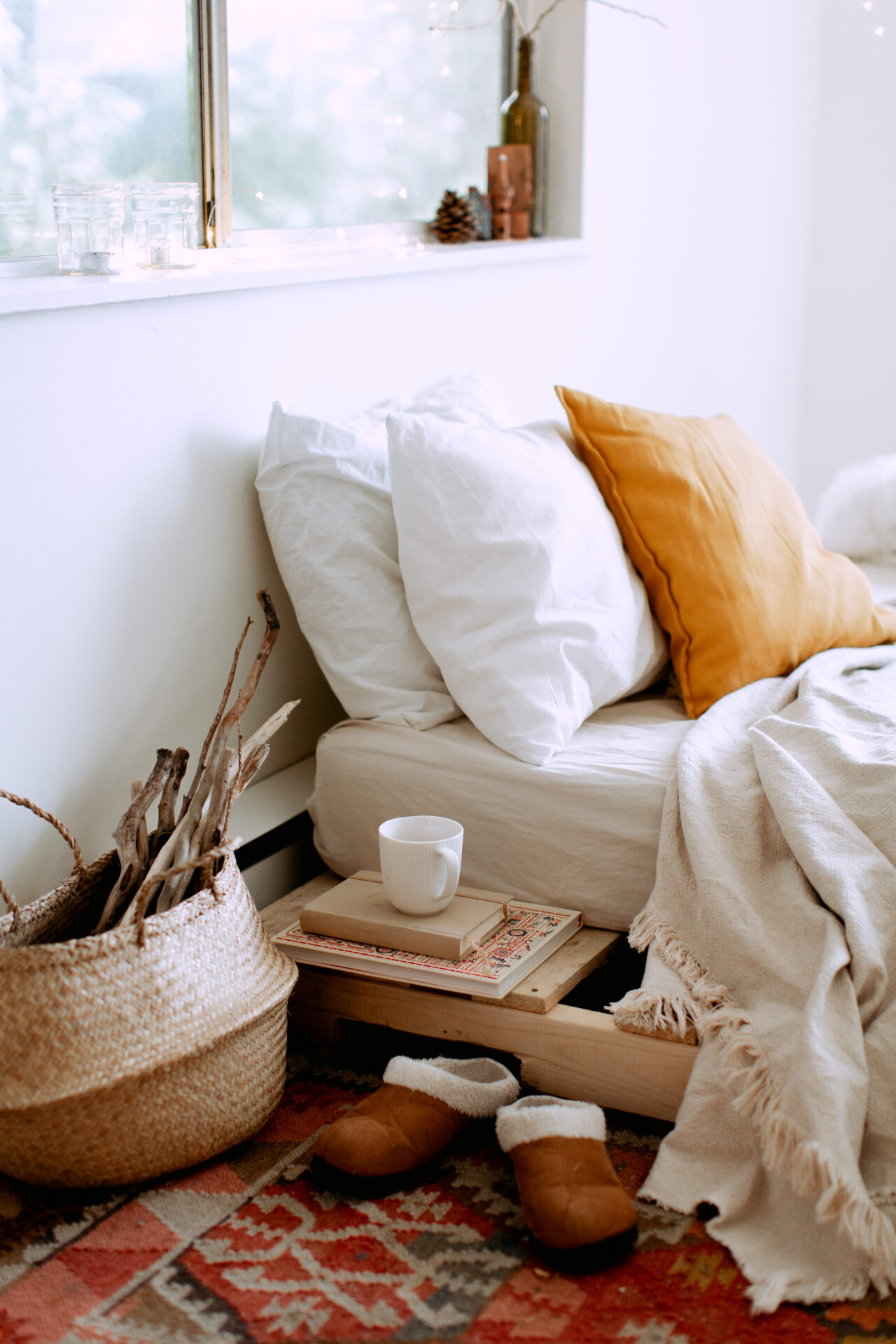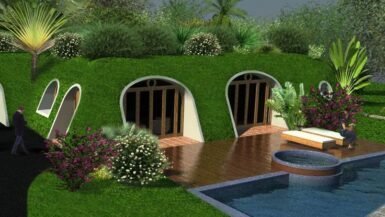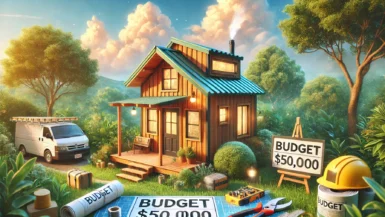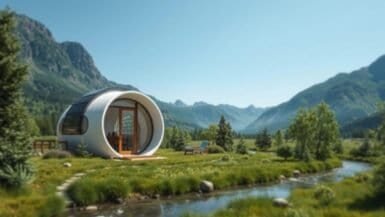As the popularity of sustainable tiny homes continues to rise, an increasing number of individuals are embracing a greener lifestyle by growing their own food. However, cultivating a thriving garden in a limited space can present its fair share of challenges. In this article, we will delve into the exciting world of tiny home gardening, offering practical advice on how to maximize space, choose the right crops, and implement innovative gardening techniques. Our goal is to empower you with the knowledge and tools necessary to create a flourishing and sustainable garden, regardless of the size of your living space. So, let us embark on this journey towards self-sufficiency and environmental stewardship, as we explore the art of growing your own food in small spaces.
Maximizing Space: Vertical Gardening Techniques for Tiny Homes
When it comes to tiny home gardening, creativity and resourcefulness are key. One of the most effective ways to make the most of your limited space is by utilizing vertical gardening techniques. These methods allow you to grow an abundance of plants in a compact area, making them perfect for small-space living. In this subsection, we will discuss various vertical gardening techniques and offer tips on how to implement them in your tiny home garden.
Trellises and Climbing Plants
Trellises are an excellent way to take advantage of vertical space in your garden. They can be made from a variety of materials, such as wood, metal, or even repurposed items like ladders. When paired with climbing plants, such as beans, peas, or cucumbers, trellises not only save space but also add a visually appealing element to your garden. Be sure to provide ample support and anchor the trellis securely, as climbing plants can become heavy as they grow.
Vertical Wall Planters
Another innovative way to maximize space in your tiny home garden is by using vertical wall planters. These planters can be hung on exterior walls, fences, or even indoors with the help of brackets. There are various types of wall planters available, including hanging pockets, modular systems, and repurposed pallets. When selecting plants for your vertical wall planter, opt for species with shallow root systems, such as herbs, lettuce, and strawberries.
Stacked Planters and Tiered Gardens
Stacked planters and tiered gardens are a space-saving solution that adds visual interest to your tiny home garden. By stacking pots or creating tiers, you can grow a variety of plants in a small area. Some popular options for stacked planters include using tiered shelving, repurposed plant stands, or even creating a DIY tower garden with PVC pipes. When designing your tiered garden, be mindful of each plant’s sunlight and water requirements, placing those with similar needs together.
Vertical Garden Structures
In addition to the previously mentioned techniques, there are several other vertical garden structures that can help you make the most of your limited space. Examples include pergolas, arches, and obelisks. These structures can serve multiple purposes, such as providing shade or privacy, while also supporting climbing plants. When selecting a vertical garden structure, consider the size and weight of the plants you intend to grow, as well as the overall aesthetic you wish to achieve.
By adopting these vertical gardening techniques, you can effectively transform your tiny home garden into a lush and productive space. Remember to consider factors such as sunlight, water, and plant compatibility when planning your vertical garden. With a bit of creativity and dedication, your tiny home garden will be thriving in no time.
Container Gardening: Choosing the Right Pots for Small-Space Harvests
In the world of tiny home gardening, container gardening is a popular and practical approach to growing your own food. With the right containers, you can cultivate a diverse and productive garden, even in the smallest of spaces. In this subsection, we will guide you through the process of selecting the best pots for your container garden, taking into consideration factors such as material, size, and drainage. By carefully considering these elements, you will be better equipped to create a thriving and sustainable garden within the confines of your tiny home.
Material Matters: Comparing the Benefits of Various Pot Materials
When it comes to choosing pots for your container garden, the material is an important factor to consider. Each material has its own set of benefits and drawbacks, so it is crucial to select the one that best suits your needs and preferences. Some commonly used materials include:
– Plastic: Lightweight, affordable, and available in various shapes and sizes, plastic pots are a popular choice for container gardening. However, they may not be the most environmentally friendly option and can degrade over time when exposed to sunlight.
– Terracotta: Known for its porous nature and classic aesthetic, terracotta pots are great for plants that require good drainage and air circulation. On the downside, they can be heavy and prone to cracking in freezing temperatures.
– Ceramic: With a wide range of designs and colors, ceramic pots can add a decorative touch to your tiny home garden. However, like terracotta, they can be heavy and susceptible to cracking in cold weather.
– Wood: Offering a natural and rustic appearance, wooden containers can be a sustainable option if sourced from responsibly managed forests. However, they may rot over time and require regular maintenance to prolong their lifespan.
– Metal: Durable, lightweight, and available in various styles, metal pots can be a great choice for tiny home gardeners. However, they may heat up in direct sunlight, potentially harming your plants’ roots.
Size and Shape: Finding the Perfect Fit for Your Plants
Selecting the right size and shape for your containers is crucial to the health and productivity of your plants. When choosing a pot, consider the following:
– Root Space: Ensure that the pot provides adequate space for your plant’s roots to grow. As a general rule, choose a container that is at least 2-3 inches larger in diameter than the plant’s root ball.
– Depth: Different plants have different root depth requirements. For example, shallow-rooted plants like lettuce and herbs can thrive in pots with a depth of 6-8 inches, while deeper-rooted species like tomatoes and peppers may require pots with a depth of 12-18 inches.
– Shape: The shape of your container can impact both the aesthetic and function of your tiny home garden. Consider choosing pots with a wide base for stability, and opt for shapes that maximize growing space, such as rectangular or square containers.
Drainage: A Crucial Component of Container Gardening Success
Proper drainage is essential for the health of your container garden plants. When selecting pots, look for those with drainage holes in the bottom to prevent waterlogging and root rot. If a container does not have built-in drainage, consider drilling holes yourself, or use a layer of gravel or pebbles at the bottom of the pot to improve drainage.
By taking the time to choose the right containers for your tiny home garden, you can set the stage for a successful and abundant harvest. Consider factors such as material, size, shape, and drainage when selecting pots, and tailor your choices to the specific needs of your plants. With the right containers in place, your small-space garden will be well on its way to becoming a flourishing and productive oasis.
Edible Landscaping: Incorporating Food Plants into Tiny Home Design
Incorporating edible plants into your tiny home landscaping not only maximizes the use of limited space but also adds beauty and functionality to your surroundings. Edible landscaping, also known as foodscaping, involves the integration of food-producing plants into the overall design of your outdoor space, creating a visually appealing and productive environment. In this subsection, we will explore various strategies for incorporating edible plants into your tiny home design, providing inspiration and guidance for creating a landscape that is both beautiful and bountiful.
Choosing the Right Plants for Your Edible Landscape
When selecting plants for your edible landscape, it is important to consider factors such as climate, sunlight, and soil conditions. Choose plants that are well-suited to your local environment, as they are more likely to thrive and require less maintenance. In addition to these practical considerations, opt for plants that offer visual appeal and complement your tiny home’s overall aesthetic. Some popular choices for edible landscaping include fruit trees, berry bushes, and flowering herbs.
Integrating Edible Plants into Your Existing Landscape
One of the keys to successful edible landscaping is seamlessly integrating food-producing plants into your existing landscape design. This can be achieved through various strategies, such as:
– Replacing ornamental plants with edible counterparts: Swap out purely decorative plants for those that provide both beauty and sustenance. For example, consider planting fruit trees or berry bushes in place of ornamental shrubs.
– Utilizing raised beds or containers: If your tiny home has limited ground space, raised beds, and containers can provide an attractive and efficient solution for growing edible plants.
– Creating edible borders or hedges: Use food-producing plants to create attractive borders or hedges around your property. This not only adds visual interest but also serves as a functional barrier and an additional source of food.
Creating a Multifunctional Outdoor Space
In tiny home living, it is essential to make every square foot count. By creating a multifunctional outdoor space that incorporates edible plants, you can maximize both the beauty and productivity of your surroundings. Consider incorporating elements such as:
– Vertical gardens: As discussed earlier, vertical gardens are an excellent way to make the most of limited space. They can also serve as an attractive backdrop or divider in your tiny home landscape.
– Edible pathways: Create walkways or stepping stone paths using edible ground covers, such as creeping thyme or oregano. These plants not only add visual appeal but also provide a fragrant and functional addition to your landscape.
– Outdoor living areas: Design outdoor seating or dining areas surrounded by your edible plants, creating a beautiful and immersive environment in which to relax and enjoy your homegrown harvest.
By thoughtfully incorporating edible plants into your tiny home design, you can create a landscape that is both visually stunning and abundantly productive. Take the time to carefully select plants that are well-suited to your environment and that complement your home’s overall aesthetic. With a bit of creativity and planning, your edible landscape will serve as a testament to the beauty and functionality of tiny home living.
Indoor Gardening Solutions: Grow Lights and Hydroponics for Tiny Living
As tiny home dwellers seek innovative ways to cultivate their own food within limited spaces, indoor gardening has emerged as a popular and viable solution. By harnessing the power of grow lights and hydroponic systems, you can successfully grow a variety of plants inside your tiny home, regardless of the available outdoor space or climate conditions. In this subsection, we will explore the benefits and challenges of indoor gardening and provide guidance on how to effectively implement grow lights and hydroponic systems in your tiny home.
Shining a Light on Grow Lights: The Key to Indoor Gardening Success
One of the primary challenges of indoor gardening is providing plants with adequate light, as most homes do not receive sufficient natural sunlight for optimal plant growth. This is where grow lights come into play. These artificial light sources are designed to mimic the sun’s spectrum, providing plants with the necessary wavelengths for photosynthesis and growth.
When selecting grow lights for your indoor garden, consider factors such as:
– Light Spectrum: Choose grow lights that provide a full spectrum of light, as this most closely replicates natural sunlight and supports all stages of plant growth.
– Light Intensity: The intensity of your grow lights should be tailored to the specific needs of your plants. High-light plants, such as tomatoes and peppers, require stronger light sources, while low-light plants, like herbs and leafy greens, can thrive under less intense lighting.
– Energy Efficiency: Opt for energy-efficient grow lights, such as LED or fluorescent options, to minimize your environmental impact and electricity costs.
Hydroponics: A Soil-Free Solution for Tiny Home Gardeners
Hydroponic systems, which involve growing plants in nutrient-rich water rather than soil, offer numerous advantages for tiny home gardeners. These systems can be highly space-efficient, allowing you to grow more plants in a smaller area. Additionally, hydroponics often results in faster growth and larger yields compared to traditional soil-based gardening.
To set up a hydroponic system in your tiny home, consider the following factors:
– System Type: There are several types of hydroponic systems to choose from, including nutrient film technique (NFT), aeroponics, and deep water culture (DWC). Research each method to determine which one best suits your needs and available space.
– Nutrient Solution: Your hydroponic system will require a nutrient solution to provide your plants with the necessary minerals for growth. Purchase a premade solution or create your own by combining water-soluble fertilizers with water.
– Maintenance: While hydroponic systems can be highly productive, they also require regular maintenance to ensure optimal plant health. Be prepared to monitor nutrient levels, pH, and temperature, and make adjustments as needed.
Combining Grow Lights and Hydroponics for a Thriving Indoor Garden
For the ultimate indoor gardening experience, consider combining grow lights with a hydroponic system. This powerful duo can create an ideal environment for plant growth, allowing you to cultivate a diverse and abundant garden within the confines of your tiny home. When setting up your combined indoor garden, be sure to:
– Choose compatible plants: Select plants that have similar light and nutrient requirements, as this will make it easier to maintain a consistent environment in your grow space.
– Optimize your layout: Arrange your plants and grow lights in a way that maximizes light exposure and minimizes shading. Consider using vertical gardening techniques, such as shelves or hanging planters, to make the most of your available space.
– Monitor and adjust: Regularly assess the health of your plants and the conditions of your grow space. Make any necessary adjustments to light intensity, nutrient levels, or other factors to ensure optimal growth and productivity.
By embracing the power of grow lights and hydroponic systems, you can successfully grow a wide variety of plants inside your tiny home, overcoming space and climate limitations. With careful planning and maintenance, your indoor garden will not only provide you with a bountiful harvest but also serve as a testament to the possibilities and rewards of tiny home living.
Companion Planting: Boosting Yield and Pest Control in Compact Gardens
In the world of tiny home gardening, every square inch counts. As you strive to maximize the productivity and health of your compact garden, consider implementing the age-old practice of companion planting. This method involves strategically pairing complementary plant species to enhance growth, boost yield, and deter pests. In this subsection, we will delve into the principles of companion planting and provide tips on how to effectively apply this technique in your tiny home garden.
The Science and Art of Companion Planting
Companion planting is built upon the understanding that certain plant species can benefit one another when grown in close proximity. These beneficial relationships can manifest in various ways, such as:
– Improving soil fertility: Some plants, such as legumes, have the ability to fix nitrogen in the soil, providing essential nutrients for neighboring plants.
– Enhancing pollination: Planting flowers alongside your fruit and vegetable crops can attract pollinators, increasing the chances of successful pollination and fruit production.
– Providing natural pest control: Certain plants can repel or attract insects, protecting vulnerable crops from pests or luring them away from more valuable plants.
Companion Planting Pairings for Tiny Home Gardens
When designing your tiny home garden, consider incorporating the following companion planting pairings to maximize space and reap the benefits of this symbiotic technique:
– Tomatoes and Basil: Planting basil alongside tomatoes not only saves space but also reportedly improves the flavor of tomatoes and deters pests such as aphids and hornworms.
– Beans and Corn: Beans can climb up corn stalks, acting as a natural trellis and saving space, while also fixing nitrogen in the soil to benefit the corn.
– Lettuce and Onions: Planting onions alongside lettuce can help deter pests such as slugs, while the shallow-rooted lettuce leaves ample room for the deeper-rooted onions to grow.
– Cucumbers and Sunflowers: Sunflowers provide shade and support for cucumbers, allowing them to climb without the need for additional trellising. This can be particularly useful in tiny home gardens with limited vertical space.
Companion Planting Precautions and Considerations
While companion planting offers numerous advantages, it is important to keep in mind that not all plants make good neighbors. Some species can inhibit the growth of others or attract pests, so it is crucial to research and plan your garden layout carefully. Additionally, be mindful of each plant’s specific requirements for sunlight, water, and nutrients, ensuring that their needs align with those of their companions.
In conclusion, companion planting can be an invaluable tool for tiny home gardeners seeking to maximize their garden’s productivity and health. By strategically pairing complementary plant species, you can reap the benefits of improved soil fertility, enhanced pollination, and natural pest control. With careful research and planning, your tiny home garden will become a thriving, symbiotic ecosystem, showcasing the incredible potential of small-space living.





Leave a reply